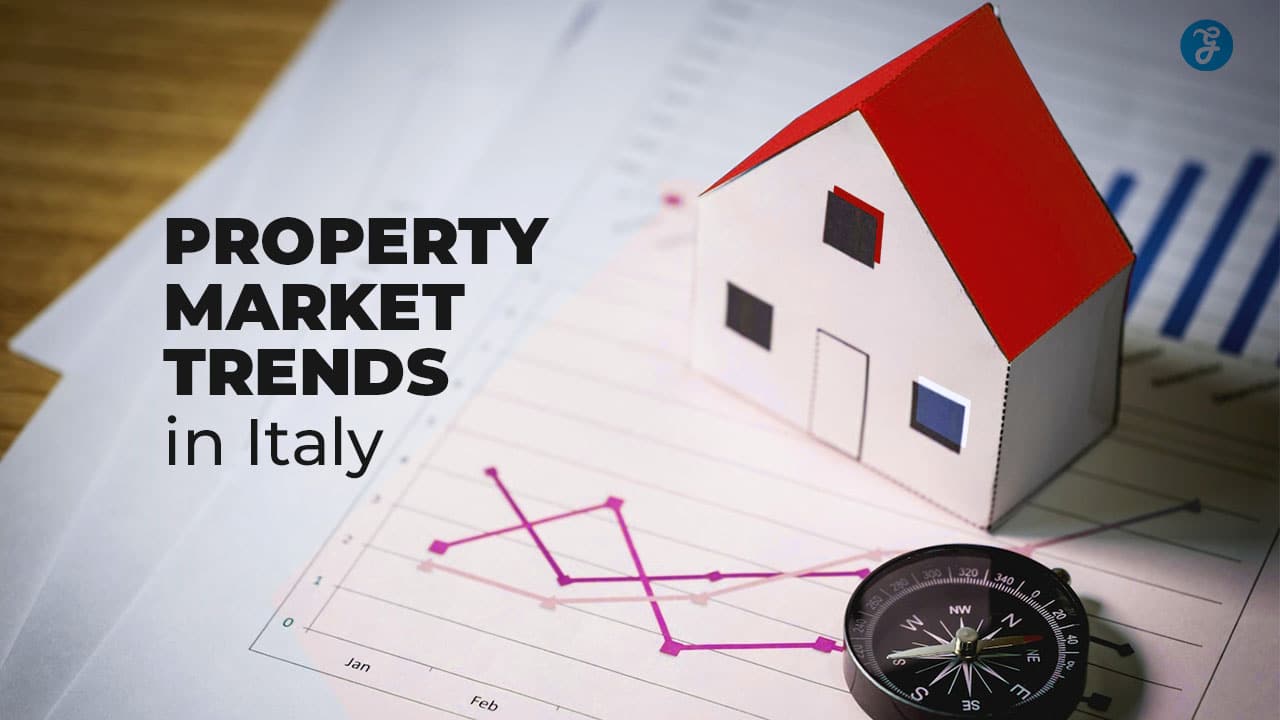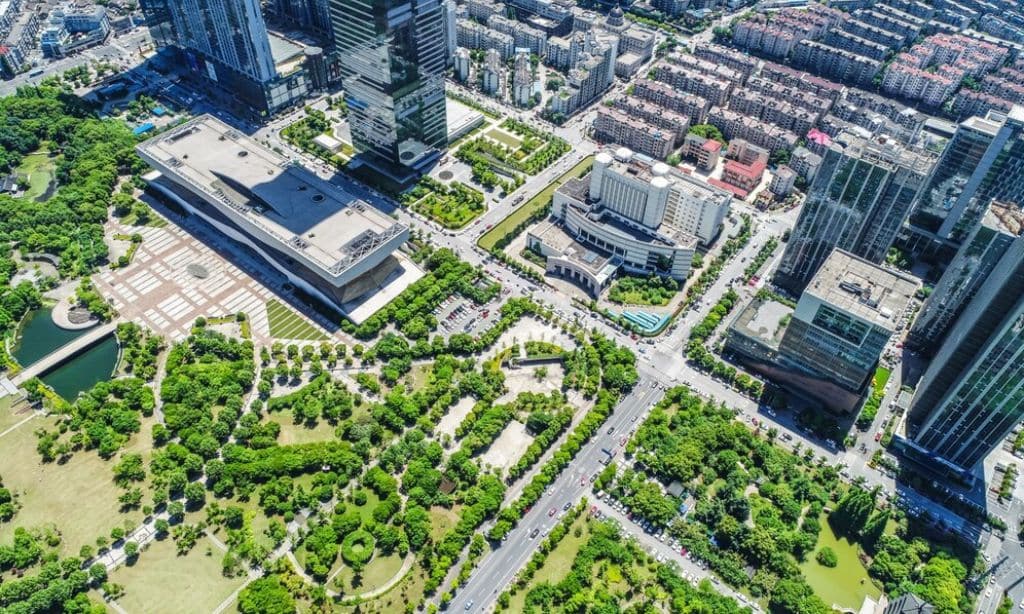The Italian property market has always been a magnet for investors, retirees, and those looking for a second home in one of the world’s most culturally rich countries. With its historic architecture, scenic landscapes, and vibrant cities, Italy offers a unique mix of charm and opportunity for real estate buyers.
As we approach 2025, the property market in Italy is evolving, shaped by global economic trends, technological advancements, and changing consumer preferences.
From the rise of sustainable living to a growing interest in smart homes, new trends are reshaping the way people invest and live in Italy. Whether you are a local buyer or a foreign investor, understanding these trends can help you make informed decisions and capitalize on new opportunities.
In this article, we’ll explore 10 key property market trends in Italy that are expected to dominate in 2025. From increased demand for eco-friendly homes to the impact of tourism on the rental market, these trends will provide valuable insights into Italy’s dynamic real estate landscape.
10 Property Market Trends in Italy
| Trend | Description | Why It Matters |
| Rise of Eco-Friendly Homes | Demand for sustainable housing is growing | Addresses climate change and energy costs |
| Increased Foreign Investments | More overseas buyers are entering the market | Drives demand in popular regions |
| Growth of Short-Term Rentals | Tourism boosts rental property investments | Provides high ROI for landlords |
| Expansion of Smart Homes | High-tech features becoming a selling point | Enhances convenience and security |
| Revival of Rural Properties | Increased interest in countryside living | Attracts buyers seeking tranquility |
| Urban Regeneration Projects | Cities are revitalizing older neighborhoods | Enhances livability and property values |
| Coastal Property Demand | Seaside locations remain highly desirable | Boosts luxury and holiday home markets |
| Flexible Workspaces in Residences | Work-from-home trends influencing designs | Attracts remote workers and professionals |
| Government Incentives for Renovation | Tax benefits for restoring older properties | Encourages investments in historic homes |
| Rising Property Prices | Demand is pushing prices higher in key regions | Affects affordability and investment ROI |
1. Rise of Eco-Friendly Homes
Eco-friendly homes are becoming a significant trend in Italy’s real estate market as buyers and investors prioritize sustainability. These properties incorporate green building materials, energy-efficient systems, and renewable energy sources such as solar panels.
The emphasis on sustainability aligns with Italy’s commitment to reducing carbon emissions and addressing climate change.
Homebuyers, particularly younger generations, are actively seeking homes with features like insulation systems, low-energy heating, and water recycling solutions. Additionally, Italy’s government offers tax incentives and grants for eco-friendly renovations, further boosting demand.
Key Features of Eco-Friendly Homes
- Solar panels for renewable energy.
- Smart energy systems to reduce consumption.
- Use of sustainable building materials like bamboo and recycled steel.
Benefits for Buyers
- Lower energy costs: Significant savings on utilities.
- Sustainability: Reduces environmental impact.
- Government incentives: Tax benefits for eco-conscious upgrades.
| Feature | Details |
| Energy Efficiency | Solar panels, insulation, smart thermostats |
| Tax Incentives | Up to 65% tax deductions for eco-renovations |
| Environmental Impact | Reduces carbon footprint significantly |
2. Increased Foreign Investments
Foreign investors are playing a critical role in shaping Italy’s property market. Regions like Tuscany, Lake Como, and the Amalfi Coast remain hotspots for international buyers, particularly from the USA, UK, and Germany.
Favorable exchange rates, Italy’s Golden Visa program, and the allure of a Mediterranean lifestyle are key factors driving this trend.
Foreign investors are not just purchasing luxury villas but are also showing interest in mid-range homes and renovation projects. This influx of international buyers is boosting demand in popular areas while diversifying Italy’s property market.
Why This Trend Matters
- Economic boost: Foreign investments contribute to local economies.
- Market stability: Increased demand keeps property prices competitive.
| Feature | Details |
| Key Investment Areas | Tuscany, Rome, Amalfi Coast, Lake Como |
| Buyer Demographics | USA, UK, Germany, and other EU countries |
| Investment Focus | Luxury villas, mid-range homes, historic properties |
3. Growth of Short-Term Rentals
The rise of platforms like Airbnb has fueled demand for short-term rental properties in Italy, particularly in tourist-heavy cities such as Florence, Venice, and Rome. Investors are capitalizing on this trend by purchasing properties specifically for vacation rentals, which often yield higher returns compared to long-term leases.
Tourism continues to be a driving force, with Italy remaining one of the top travel destinations globally. Short-term rentals provide flexibility for property owners, allowing them to maximize earnings during peak tourist seasons.
Key Features
- High ROI for landlords during tourist seasons.
- Flexible leasing options for property owners.
- Government regulations shaping the rental market dynamics.
| Feature | Details |
| Key Locations | Rome, Venice, Florence, Milan |
| Rental ROI | 8–12% annually in tourist-heavy areas |
| Regulations | Vary by region, impacting investment plans |
4. Expansion of Smart Homes
Smart home technology is no longer a luxury but a necessity for many homebuyers in Italy. Features like automated lighting, security systems, and voice-controlled devices are becoming standard expectations, particularly in urban and high-end properties.
These technologies enhance convenience, security, and energy efficiency.
As more Italians adopt connected devices, developers are integrating smart home systems into new builds and renovations. This trend is especially appealing to younger buyers and tech-savvy investors looking for modern, future-proof homes.
Benefits for Homebuyers
- Convenience: Control lighting, appliances, and security remotely.
- Energy savings: Automated systems reduce unnecessary energy usage.
- Enhanced security: Advanced surveillance systems provide peace of mind.
| Feature | Details |
| Popular Features | Smart thermostats, automated lighting, CCTV |
| Adoption Rate | Rapid growth in urban and luxury markets |
| Tech Integration | Compatible with IoT devices and mobile apps |
5. Revival of Rural Properties
In recent years, rural properties in Italy have seen a resurgence in demand, particularly among international buyers and Italians seeking a slower, more tranquil lifestyle.
The pandemic highlighted the appeal of spacious homes away from crowded cities, driving many to reconsider rural living. Italy’s scenic countryside regions, such as Tuscany, Umbria, and Piedmont, are at the forefront of this trend.
The availability of charming farmhouses, rustic villas, and centuries-old properties in these areas provides buyers with unique investment opportunities. Additionally, rural homes often come at lower prices compared to urban properties, making them an attractive option for those looking to restore and renovate.
Key Drivers of the Trend
- Remote work: Flexibility has enabled more people to move to rural areas.
- Affordable pricing: Countryside properties offer better value per square meter.
- Quality of life: Fresh air, space, and a slower pace of life are major draws.
| Feature | Details |
| Popular Regions | Tuscany, Umbria, Piedmont, Abruzzo |
| Property Types | Farmhouses, villas, historic estates |
| Key Buyers | Retirees, remote workers, international investors |
6. Urban Regeneration Projects
Urban regeneration projects are transforming Italy’s cities by revitalizing neglected neighborhoods and repurposing historic buildings. These initiatives aim to improve urban living conditions, enhance infrastructure, and preserve Italy’s rich architectural heritage.
Cities like Milan, Rome, and Naples are leading the way, with large-scale projects that attract investors and homebuyers.
Urban regeneration often involves converting abandoned factories, warehouses, and old buildings into modern residential and commercial spaces. These projects not only increase property values but also create vibrant, livable communities.
Why It Matters
- Preservation of heritage: Combines modern living with historic charm.
- Economic growth: Stimulates local economies and boosts property markets.
- Sustainability: Encourages eco-friendly redevelopment practices.
| Feature | Details |
| Key Cities | Milan, Rome, Naples |
| Redevelopment Focus | Abandoned buildings, historic neighborhoods |
| Investment Potential | Higher property values post-renovation |
7. Coastal Property Demand
Italy’s stunning coastline continues to draw attention from property buyers, particularly for vacation homes and luxury investments.
Locations like the Amalfi Coast, Sardinia, and the Ligurian Riviera are hotspots, offering breathtaking views, Mediterranean climates, and world-class amenities.
Coastal properties are not just for the wealthy. With options ranging from luxury villas to smaller seaside apartments, there is something for every budget.
Coastal towns are particularly attractive for international buyers seeking rental income, as these properties tend to perform well in the short-term rental market.
Key Features of Coastal Properties
- Proximity to beaches and scenic views.
- High rental potential during tourist seasons.
- Luxury amenities like private pools and gardens.
| Feature | Details |
| Popular Coastal Areas | Amalfi Coast, Sardinia, Ligurian Riviera |
| Property Types | Villas, apartments, vacation homes |
| Buyer Demographics | International investors, retirees, expats |
8. Flexible Workspaces in Residences
The rise of remote work has transformed the way people use their homes. Homebuyers in Italy are now prioritizing properties with dedicated workspaces, whether it’s a small office nook or a fully equipped study.
This trend is particularly strong among urban professionals and international buyers who work remotely but need a functional and productive home environment.
Developers are responding to this demand by designing properties with flexible layouts that cater to both living and working needs. In Italy’s urban areas, coworking-friendly apartments are gaining popularity, blending residential spaces with shared work environments.
Key Benefits for Buyers
- Enhanced productivity with dedicated workspaces.
- Modern designs that accommodate multiple purposes.
- Attractive for remote workers, freelancers, and entrepreneurs.
| Feature | Details |
| Popular Locations | Milan, Florence, Bologna |
| Key Buyers | Remote workers, young professionals |
| Property Features | Home offices, coworking spaces, flexible layouts |
9. Government Incentives for Renovation
The Italian government continues to offer attractive incentives for renovating older properties, making it easier for buyers to invest in restoration projects.
Programs such as the “Ecobonus” and “Superbonus 110%” provide significant tax deductions for energy-efficient renovations and seismic upgrades.
These incentives are particularly appealing for buyers interested in historic homes and rural properties. By offsetting renovation costs, these programs encourage the preservation of Italy’s architectural heritage while promoting sustainability.
Key Features of Renovation Incentives
- Tax deductions: Up to 110% for eligible renovation expenses.
- Eco-friendly focus: Prioritizes energy efficiency and green upgrades.
- Broad eligibility: Available for both primary and secondary homes.
| Feature | Details |
| Incentive Programs | Ecobonus, Superbonus 110% |
| Eligible Properties | Historic homes, rural properties, apartments |
| Renovation Focus | Energy efficiency, seismic upgrades |
10. Rising Property Prices
Property prices in Italy are on the rise, particularly in high-demand areas such as Rome, Milan, and Tuscany.
Factors driving this trend include increased foreign investments, urban regeneration projects, and the growing appeal of eco-friendly homes. While this creates opportunities for investors to benefit from capital appreciation, it also raises affordability concerns for local buyers.
Despite the price increase, Italy’s real estate market remains competitive compared to other European countries, offering attractive returns for both domestic and international investors.
Key Drivers of Rising Prices
- High demand: Popular areas attracting more buyers.
- Limited supply: Historic properties and prime locations are scarce.
- Tourism impact: Boosts demand for short-term rental properties.
| Feature | Details |
| Hot Markets | Milan, Rome, Tuscany, Amalfi Coast |
| Investment Returns | High potential in tourist-heavy regions |
| Affordability | Prices remain competitive compared to Europe |
Final Thoughts
Italy’s property market in 2025 is poised for dynamic growth, driven by trends such as eco-friendly housing, foreign investments, and urban regeneration projects. Whether you’re a local buyer or an international investor, understanding these trends can help you navigate the market more effectively and capitalize on new opportunities.
From the revival of rural properties to the demand for coastal homes and government-backed renovation incentives, Italy offers diverse opportunities for all types of buyers.
By staying informed about these developments, you can make strategic decisions and invest in properties that align with your goals.
The Italian real estate market continues to balance tradition and innovation, making it one of the most compelling destinations for property investments. As these trends unfold, they promise to shape the future of Italian real estate, offering both challenges and opportunities for those ready to embrace them.






































